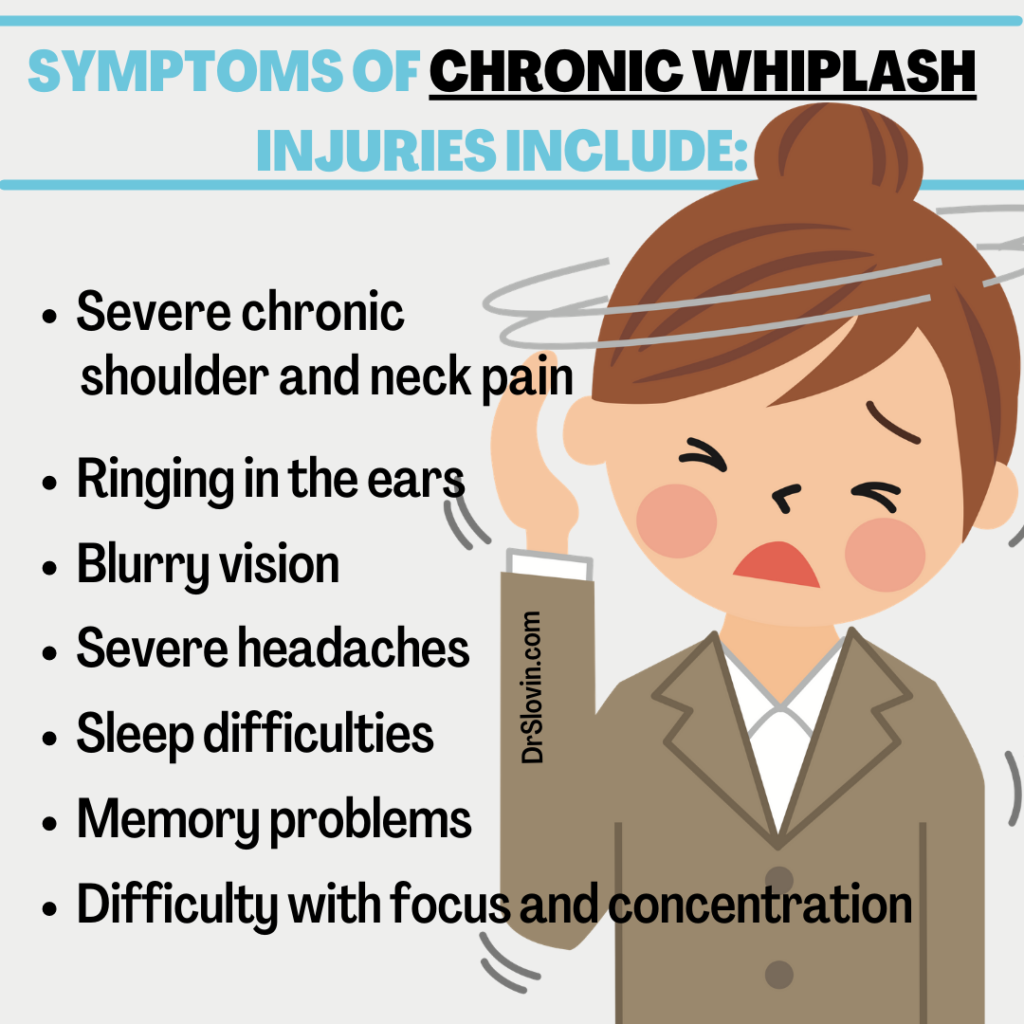How the Brain Changes in Whiplash Injuries

How the Brain Changes in Whiplash Injuries
Imagine what it would be like to have a fall or accident in your teens, only to suffer from those whiplash symptoms decades later. That’s what happened to my patient, Bob.
Bob is a 57-year-old-man who came to me in my Norwalk clinic because he’d been suffering from Bell’s palsy—muscle weakness that causes drooping on one side of the face—for about seven years. His symptoms were severe, including:
· Drooling
· Disordered movements in the facial movements that affected his expressions
· Tearing
· Loss of taste
· Hypersensitivity to sounds
After reviewing all his X-rays, I’d noticed a severe neck injury that must’ve been many years old. Bob told me about a major accident he’d had decades earlier. He was 17, out for a joy ride with a friend, wearing no seatbelt, and racing towards his youthful adrenaline between the lines on the road. Sadly, his night was cut short when he was involved in a severe accident that killed his friend and nearly stole his life too. He wasn’t expected to make it through.
Whiplash after an accident can lead to serious long-term repercussions if not treated from the beginning. But the good news is that it’s reversible. Within just a few visits, Bob saw significant relief in his symptoms. His whiplash treatment regimen was a critical part of his recovery. He now lives a full and active life without the pain and discomfort of a long-ago tragedy.

The Brain at the Onset of Whiplash Injuries
In severe accidents where you lose consciousness for any period, the brain develops lesions in the prefrontal cortex. This is the area of the brain responsible for executive functions like focus, being able to predict the consequences of your actions, impulse control, and management of emotional reactions. Lesions can also appear in deeper structures of the brain if the injury is bad enough.
The Long-Term Effects and Symptoms of Whiplash Injuries
Just because a whiplash injury doesn’t knock you unconscious, doesn’t mean it can’t become problematic. Symptoms of chronic whiplash injuries include:
· Severe chronic shoulder and neck pain
· Ringing in the ears
· Blurry vision
· Severe headaches
· Sleep difficulties
· Memory problems
· Difficulty with focus and concentration
In 2016, a study revealed changes in the pain and posture processing part of the brain many years after the accident. They were looking for a way to help people suffering from chronic whiplash associative disorder—a problem with motor, sensorimotor, and sensory functions. Whiplash can happen at low speeds, so people don’t always see their doctor right away, often leaving the injury untreated for years. When they do seek attention, it’s difficult to impossible to see anything on tests. In the study, researchers identified where the pain is occurring. There is restricted blood flow from the neck to areas in the brain involved with pain perception and sensory processing from inside the body.
Treating whiplash injuries quickly is critical to avoid long-term damage to nerves, muscles, tendons, and the brain. Proper whiplash treatment can reverse symptoms; however, the severity and type of injury will determine the path of your treatment plan. In all cases, it’s best not to wait. Contact Slovin Chiropractic Center today for a consultation.
Please submit the form below for our application
Sources:
BC Medical Journal: Purports Of Brain Damage Following Presumed Whiplash Injury
Science Direct: Whiplash symptoms are caused by actual changes in the brain
